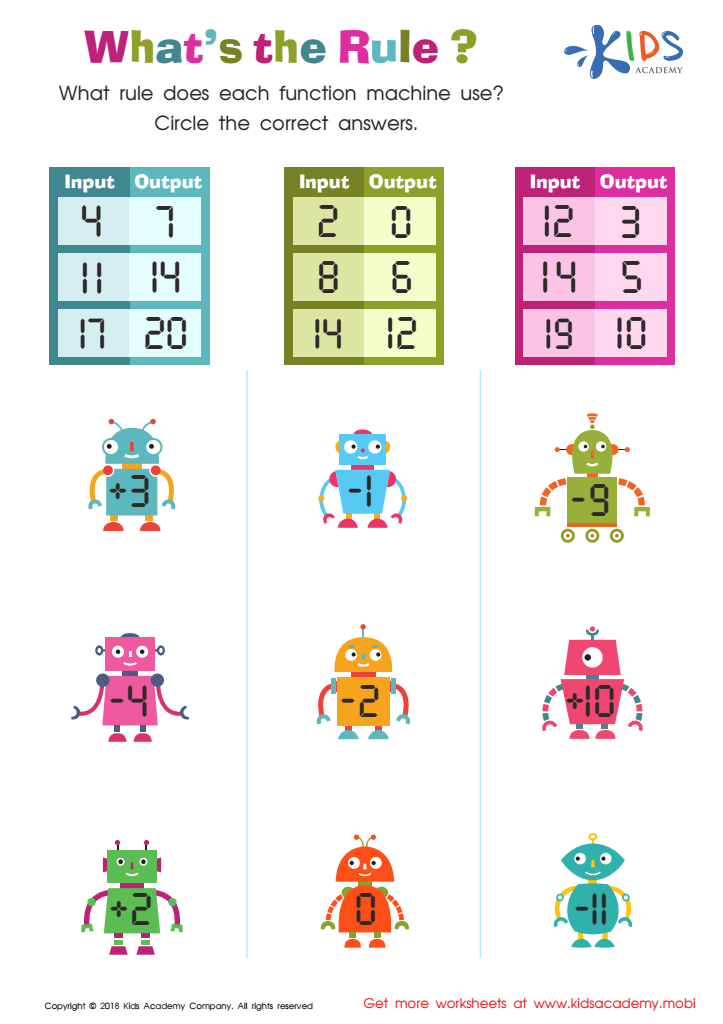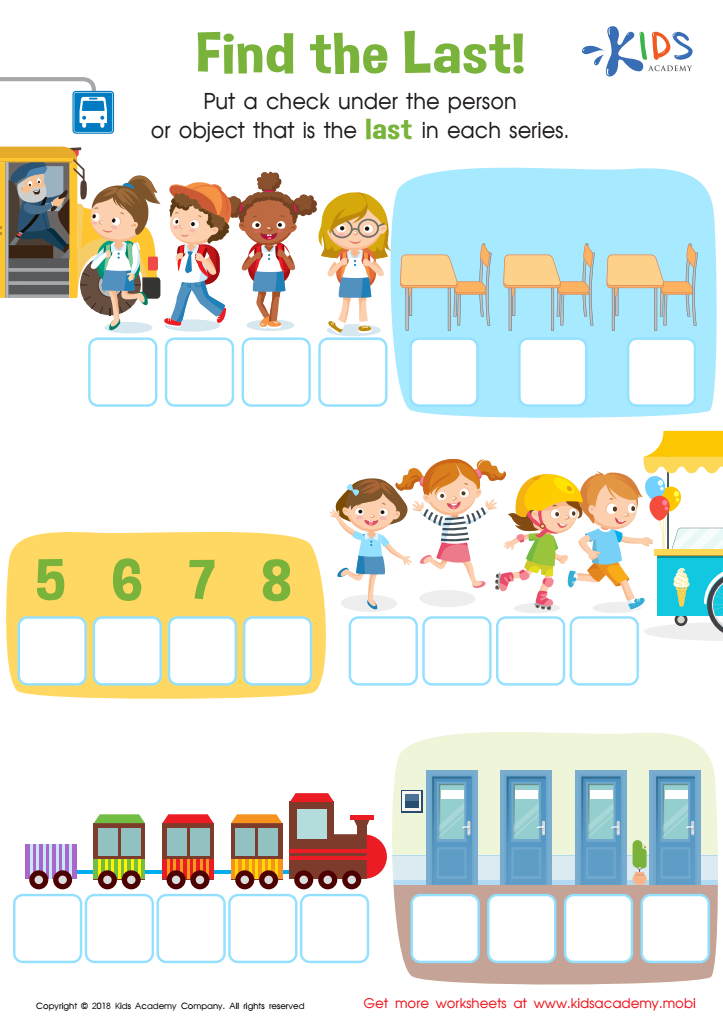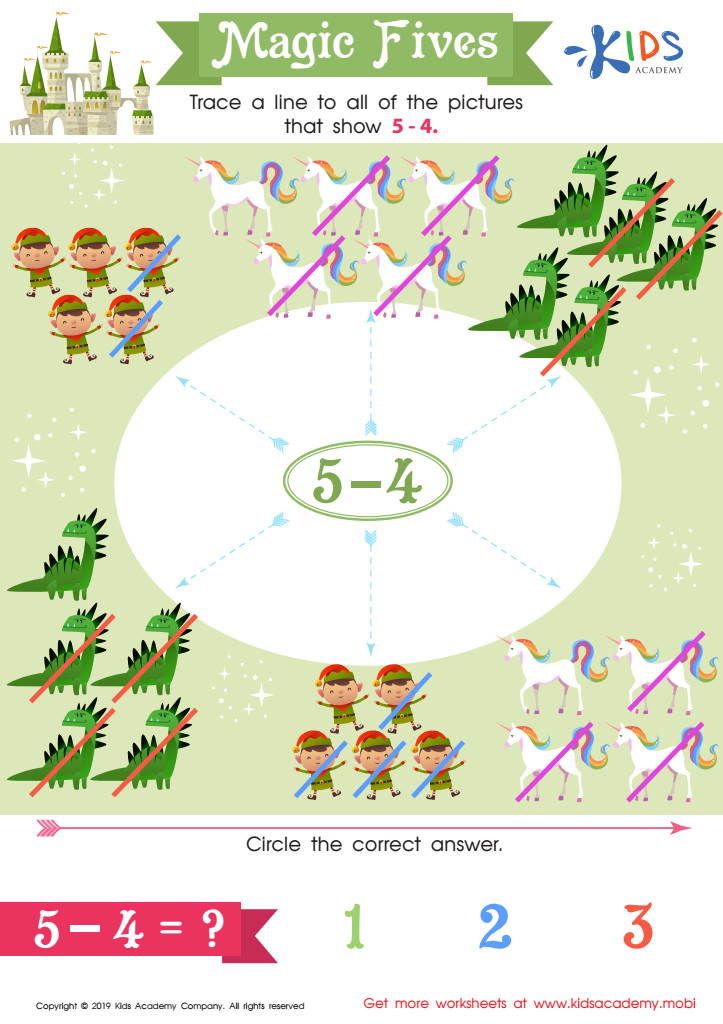Understanding patterns Normal Math Worksheets for Ages 3-7
5 filtered results
-
From - To
Explore the world of patterns with our specialized "Understanding Patterns" math worksheets. Tailored for children aged 3-7, these worksheets are designed to foster early math skills and pattern recognition. Your child will delight in discovering sequences, sorting objects, and predicting what comes next with engaging, colorful exercises. Perfect for home or classroom use, our printable worksheets make learning fun and interactive. Boost your child's cognitive development and prepare them for future math success with resources from Kids Academy. Dive in and watch your child’s confidence and love for learning bloom!


Addition: Space Math Worksheet


What's the Rule Worksheet


Find the Last! Worksheet


Magic Fives Worksheet


Boomerang Addition Worksheet
Understanding patterns in early math education is crucial for children aged 3-7. Patterns form the foundational building blocks for mathematical reasoning and various cognitive skills. When parents and teachers help children recognize patterns, they are not just teaching them about repetition or sequences. They are nurturing the early development of critical thinking, problem-solving, and the ability to make predictions.
Engagement with patterns also enhances a child’s ability to understand numbers and operations. For example, recognizing that every '2' in a series adds up helps children grasp addition and multiplication concepts. This skill translates to better number sense, which is essential for complex math as they grow older.
Beyond mathematics, understanding patterns supports language development and comprehension. Patterns are inherent in the way languages compose words and sentences, and recognizing these can boost reading skills and improve communication abilities.
Moreover, fostering an early appreciation for patterns can stimulate a child’s curiosity and interest in the natural world. Observing patterns in nature or art can spark creativity and innovative thinking.
Overall, advocating for an early focus on patterns prepares children for lifelong learning, equipping them with tools to navigate not only mathematics but various disciplines and real-world scenarios. It plants the seeds for forming connections between different concepts and ideas, promoting a holistic approach to learning.
 Assign to My Students
Assign to My Students


















